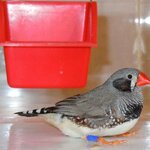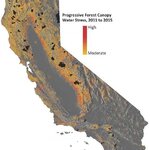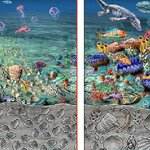Ecology & Zoology

The magnetic compass that birds use for orientation is affected by polarized light. This previously unknown phenomenon was discovered by researchers at Lund University in Sweden.
The discovery that the magnetic compass is affected by the polarization direction of light was made when trained zebra finches were trying to find food inside a maze. The birds were only able to use their magnetic compass when the direction of the polarized light was parallel to the magnetic field, not when perpendicular to the magnetic field.
"We were expecting an effect, but not one so major that it would lead to…

One of the most triumphant moments in the book and recent movie "The Martian" comes when lead character Mark Watney successfully grows a potato crop on Mars.
It's more than food for survival, it's a mental and engineering breakthrough. In space, there is no scent of baking bread, no wind on your face, no sound of raindrops hitting the roof, no favorite kitten to curl up in your lap. Over time, being deprived of these common earthbound sense stimulations may take a toll, according to NASA's Behavioral Health and Performance team. They say gardening provides recreation and relaxation and can…

Latest research reveals why geckos are the largest animals able to scale smooth vertical walls - even larger climbers would require unmanageably large sticky footpads. Scientists estimate that a human would need adhesive pads covering 40% of their body surface in order to walk up a wall like Spider-man, and believe their insights have implications for the feasibility of large-scale, gecko-like adhesives.
A new study in PNAS shows that in climbing animals from mites and spiders up to tree frogs and geckos, the percentage of body surface covered by adhesive footpads increases as body size…

A new study found that when temperatures get warmer, woodrats suffer a reduced ability to live on their normal diet of toxic creosote, suggesting that global warming may hurt plant-eating animals.
While not all animal diets are as toxic as those of woodrats and other rodents that eat plants like creosote bushes or juniper, most mammals eat some toxins in their diet. In an ongoing evolutionary battle, plants evolve chemical defenses against being eaten and animals evolve liver enzymes or other ways to overcome or avoid plant toxins.
Animals with diets that contain toxic plants include rabbits…

The coffee berry borer (Hypothenemus hampei) is a plague that affects coffee crops. It has a detoxification system based on microbial communities so it can perform its life cycle in the plant while exposed to high levels of caffeine.
In human terms, the caffeine is equivalent to 500 espressos , which would kill a person.
"The aim was to study which are they and how they are associated with the digestive tract of the insect. For the study we took samples of insects from different locations like Hawaii, Indonesia, Puerto Rico, Mexico, Kenya, India and Guatemala," Javier A. Ceja Navarro of…

Females don't always think bigger is better when it comes to males. Instead, it is just the opposite, in some instances. Females may be more attracted to small partners because they are less likely to get into fights.
In many species large males have more mating success than small males, either because females find them more attractive or because they can use their brawn to intimidate small rivals. They are also more likely to have more sexual partners and be less committed fathers.
A study in the Journal of Evolutionary Biology found that while small male beetles were more successful…

Killer whales eat 375 pounds of food per day. Now imagine most of that is salmon, the food source they most often in the summer, and you can imagine how devastating that can be to the salmon population of the Pacific Northwest if such whales were higher population. That's equivalent salmon each day to what 200 Americans for a year (300,000 metric tons per year total consumption.)
Salmon is currently the third most popular fish in the United States (behind shrimp and tuna) and one third of it comes from Pacific salmon, both farmed and in the wild.
The determination about diets was made…

Why do the distinctive piebald patches seen in black and white cats and some horses occur? The predominant hypothesis has been that piebald patterns form on animals' coats because pigment cells move too slowly to reach all parts of the embryo before it is fully formed but a new study found otherwise.
Instead, a study of how pigment cells behave in mice found that they move and multiply randomly during early development rather than follow instructions. There is no complicated cell-to-cell communication to send the cells in a particular direction. If further research takes place, it…

Millions of trees are in peril from the drought in California but that is not the fault of climate change or even bad luck - every 20 years California has a drought as bad as what just ended. It is instead bad policy; California's water infrastructure has not been improved in a meaningful way since the 1960s and since then environmental policy has been dictated by lobbyists for activist groups, so the state can't build new reservoirs, to store water for when droughts happen, and they are forced to dump fresh water into the Pacific Ocean.
The trees aren't just in peril from politicians and…

There is a bad habit in environmental circles, created by the academics that feed them information: Discovering a new species and immediately declaring it endangered. More evidence-based scientists recognize that over 99.99999% of all species that have gone extinct we never knew about in the first place so declaring everything endangered and claiming a domino effect undermines public acceptance of science. Nonetheless, a new paper adds to the former effort by saying we should forget species extinction and talk about species rarity.
Yale's Pincelli Hull and colleagues from the Smithsonian…